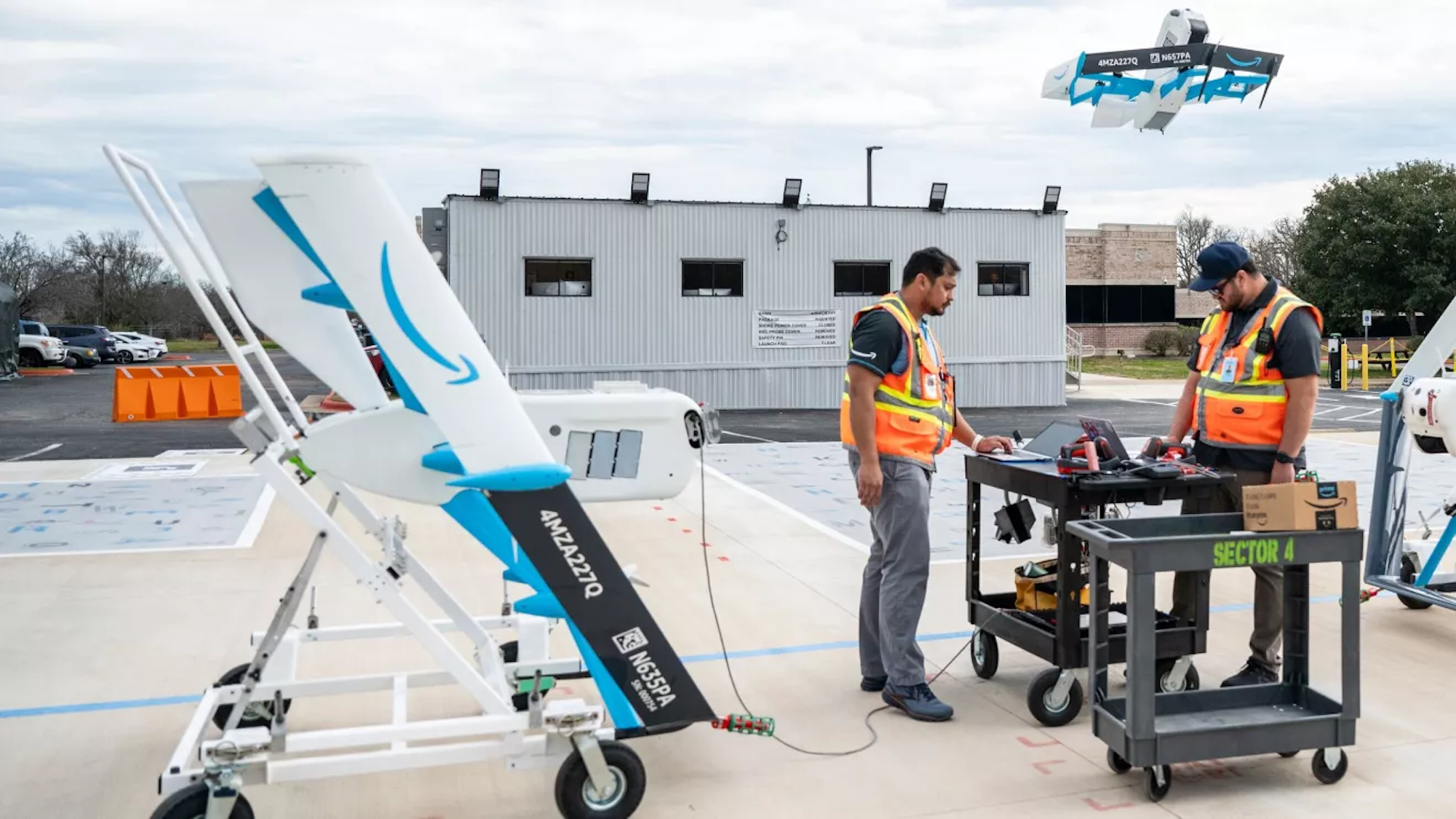

Amazon has spent nearly a decade working towards unleashing drones fleets capable of rapid, same-day deliveries to customers’ homes. Since 2020, its aerial prototypes have dropped off small packages near a handful of Fulfillment Centers, but only within a human operator’s visual line of sight. But that range is reportedly about extending much farther—in a blog post earlier today, Amazon confirmed it has received a Beyond Visual Line of Sight (BVLOS) clearance from the Federal Aviation Administration for Prime Air current line of MK27 aerial drones.
BVLOS approval allows pilots to use remote instruments and onboard monitoring technology to fly drones, even when operators can’t physically see them, greatly increasing how far a drone is legally allowed to travel. And for Amazon, that means even more customers capable of receiving Prime Air deliveries.

Amazon says it needed multiple piloting advancements to achieve BVLOS permission, including an “onboard detect-and-avoid technology” to ensure its drones can identify and fly around potential in-air obstacles. Real-world demonstrations in the presence of FAA inspectors were also required, which involved “real planes, helicopters, and a hot air balloon to demonstrate how the drone safely navigated away from each of them.”
For now, Amazon’s BVLOS certification appears to only apply for an expanded, “more densely populated” delivery area surrounding its Fulfillment Center in College Station, Texas. Prime Air drones are also currently only capable of carrying five-pounds of cargo, which limits them to items like household essentials and drugstore products. Amazon says it plans to integrate its drones into larger delivery networks by the end of the year, including Same-Day Delivery sites. Prime Air testing is also occurring in Arizona, California, and in Italy.
[Related: Are drones the future of sustainable deliveries?]
There are also plans to soon replace its line of MK27 drones with the MK30, which the company says is half-as-loud and capable of flying twice as far as previous models. Using a vertical takeoff system that converts midair to a horizontal configuration, the MK30 is also cleared to fly in slightly inclement weather conditions like light rain, while MK27 is only making deliveries when skies are clear.
Of course, the company isn’t planning on stopping there. Amazon says its ultimate goal is to offer 30-minutes-or-less package deliveries from “highly autonomous drones” across much wider areas, with an aim of completing 500 million deliveries per year by the decade’s end. Advocates argue an increased reliance on drones could cut down on costly vehicle carbon emissions and lessen the notoriously demanding (and some would say dangerous) Prime Delivery employee quotas. Meanwhile, there’s always the question of just how much automation companies like Amazon truly envision, and what that could ultimately mean for the human labor force.
